Dragonflies may not be as common as bees and mosquitoes, but these flying insects are very recognizable. Dragonflies have long bodies, large eyes, and transparent wings with a wingspan of about 2 to 5 inches (5.08 to 12.7 cm). Most often, dragonflies are found in any place with water, including swamps, lakes, canals, streams, rivers, and ponds.
If you’re wondering about some types of dragonflies that might be in your environment, we have prepared a list of 17 types of dragonflies and where you can most often find them.
Table of Contents
1. Austropetaliidae
Austropetaliidae is a small family of dragonflies with only four genera, namely the Archiperalia, Austropetalia, Hypopetalia, and Phyllopetalia. This type of dragonfly is brown in color, medium to large in size, and has silvery-white to transparent wings.
Where to find them: Water regions of Argentina, Australia, and Chile
2. Blue Dasher (Pachydiplax longipennis)
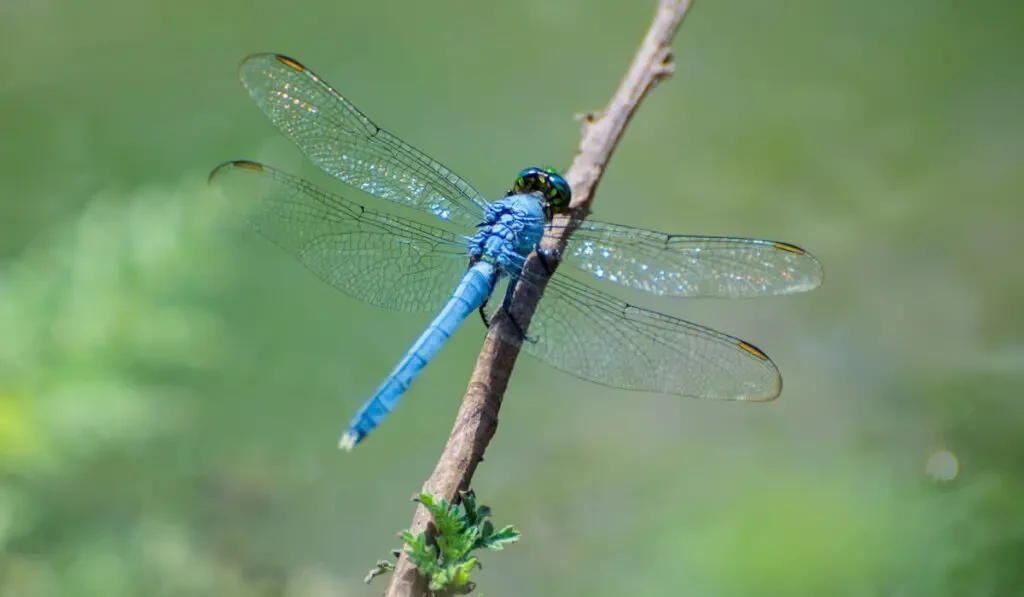
The blue dasher belongs to the skimmer family. The only species under the genus Pachydiplax, the blue dasher’s species name longipennis means “long wings.”
However, their wings are not long compared to other related species. The females actually have short abdomens, which makes their wings appear longer.
On average, the blue dasher measures about 1 to 1.5 inches (2.54 to 3.81 cm) long. Males are easily distinguished with their flashy blue color, metallic green eyes, and yellow-striped thorax. On the other hand, females tend to be less colorful than males.
Where to find them: North America, Bahamas, United States, and lower portions of Canada (Ottawa)
3. Clubtail Dragonfly
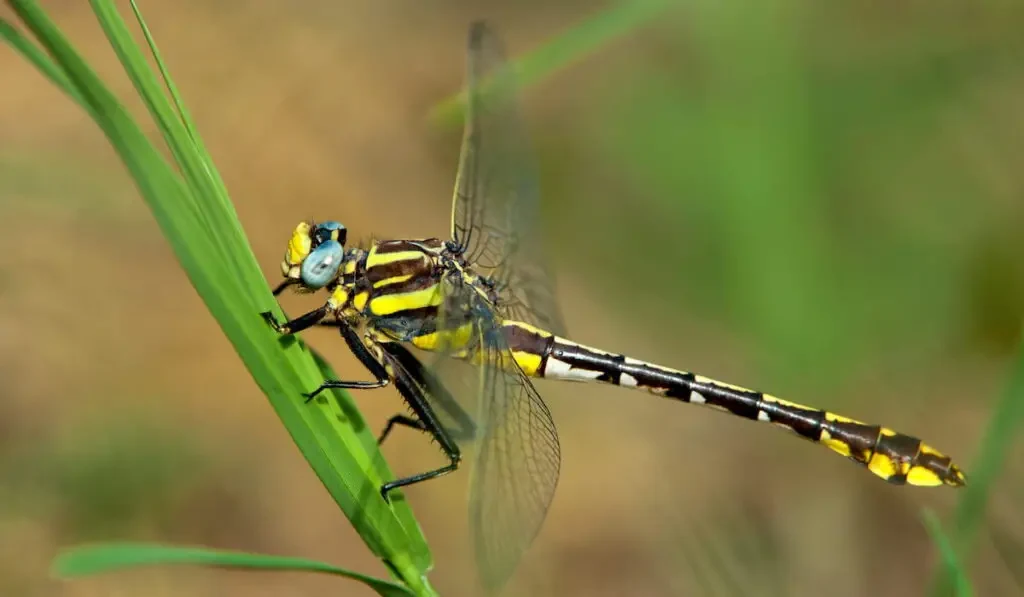
Clubtail dragonflies, also called blade tail dragonflies, belong to the Gomphidae family. This type of dragonfly has about 100 species, and most species each have unique characteristics apart from their club-shaped tail.
Their club-shaped tail at the end of their abdomen is more prominent in males than females. However, this characteristic may entirely be absent in some species. Clubtail dragonflies are divided into fourteen genera.
Where to find them: Water bodies in North America
4. Common Whitetail
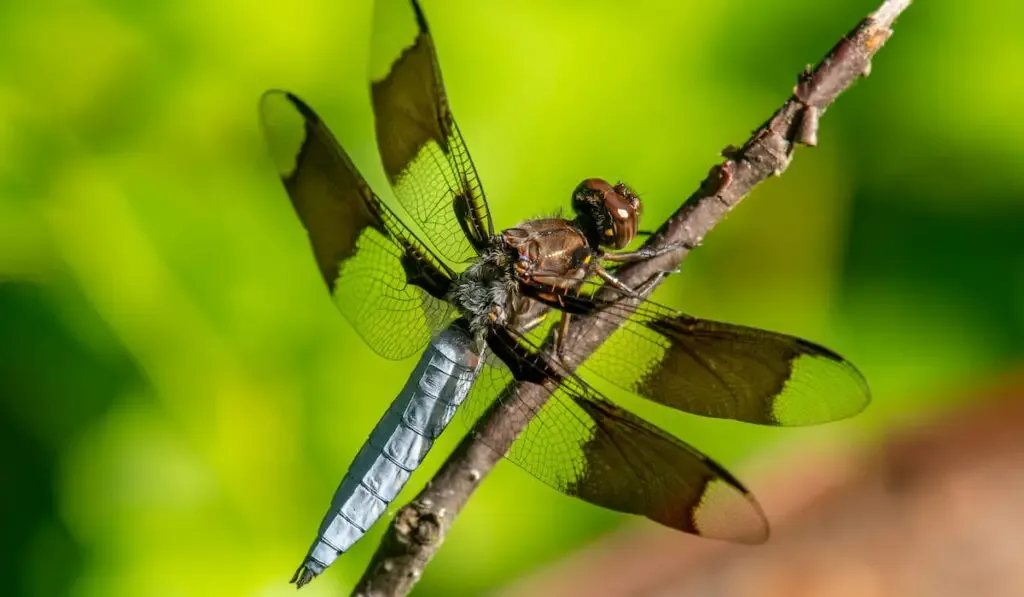
Also known as a ‘long-tailed skimmer,’ the common whitetail is a type of dragonfly with a distinct and unique appearance. Male common whitetails have bulky white bodies that are about 2 inches (5 cm) long. They also have brownish-black bands on their translucent wings that give them a checkered appearance.
Female common whitetails have brown bodies, white zigzag stripes on their abdomen, and various patterns of wing spots. Compared to male whitetails, females are smaller and they also have shorter bodies.
The common whitetail forages on mosquitoes and other smaller flying insects near marshes, ponds, rivers, and other slow-moving water bodies.
Where to find them: Across North America
5. Darner Dragonfly
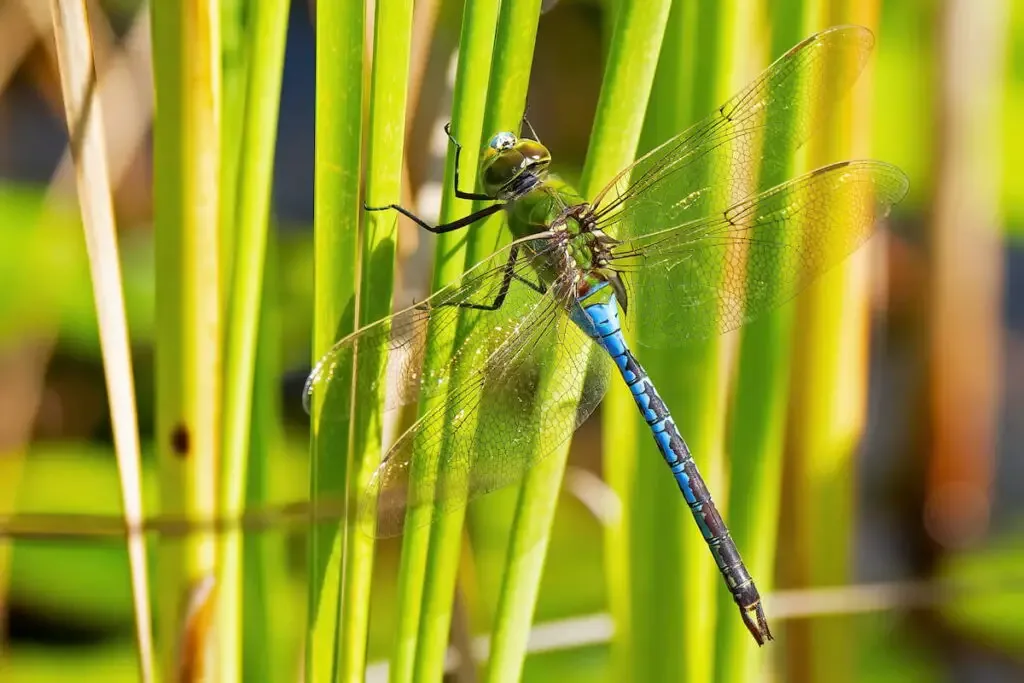
Darner Dragonflies belong to the Aeshnidae family. This type of dragonfly is large in size and has a black body with blue spots for males, and hues of yellow or green for females. While darner species have their own distinct feature, their color is one of the things they share in common.
Another physical characteristic of darner dragonflies that sets them apart from other types of dragonflies is that they do not have thoracic stripes on the top or the bottom.
Where to find them: Lakes, ponds, streams, and other water bodies in the United States
6. Emerald Dragonfly
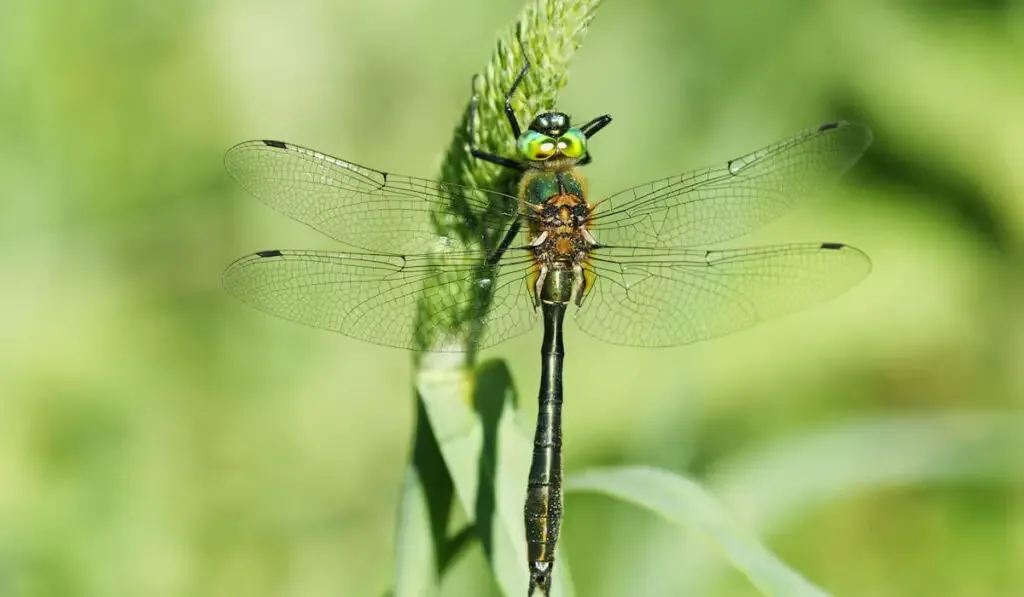
Emerald dragonflies belong to the family of Corduliidae. This type of dragonfly has prominent emerald green eyes, hence their name. They also have short, broad bodies.
Native to North America, emerald dragonflies are usually found in lakes, swamps, marshes, cool ponds, and near wooded or forested places. Emerald dragonflies are also known to fly from early spring through late summer, depending on the region.
Where to find them: Most regions of the United States, including Florida and Texas
7. Gliders
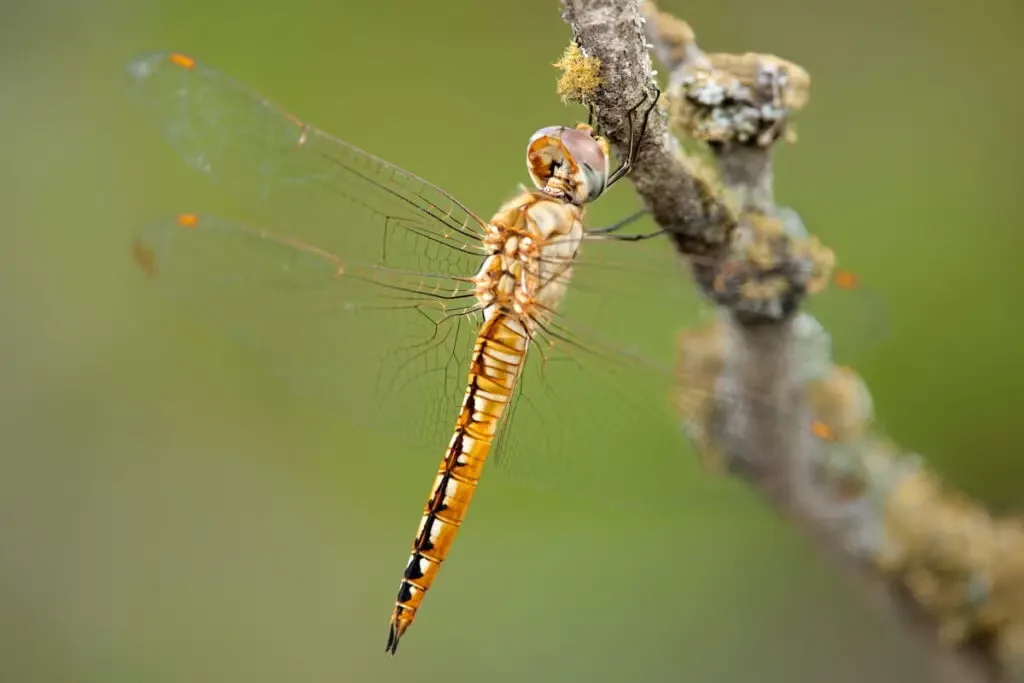
Also known as Pantala flavescens, gliders are the most dispersed dragonflies in the world. This type of dragonfly features a bold yellow-colored body which identifies them from other dragonfly species. They also have a yellow face that gradually transforms into reddish color in males.
Adult gliders forage on flying ants and other insects, including mosquitoes, bees, and butterflies. They are mostly found on permanent pools, ponds, swamps, and other bodies of water.
Where to find them: All countries except Antarctica
8. Golden-ringed Dragonfly
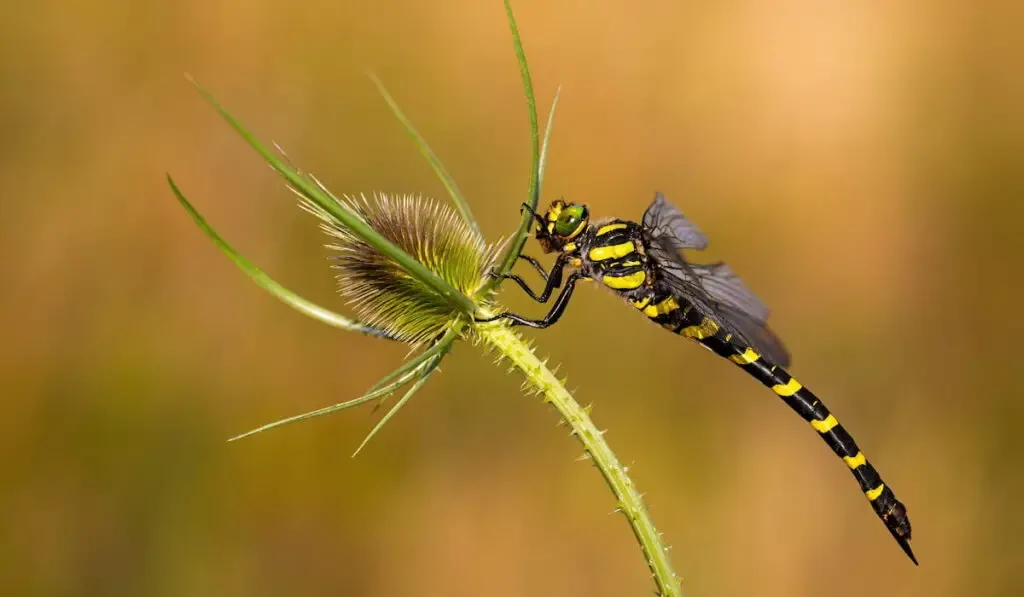
The golden-ringed dragonfly is a large dragonfly that forages on large insects, including damselflies, wasps, bumblebees, beetles, and other dragonflies. Fast and agile, female golden-ringed dragonflies are considered the longest dragonfly in the United Kingdom due to their long ovipositor.
This type of dragonfly is black with yellow bands along its body. They also have bright green eyes. Males are shorter and thicker than females.
Where to find them: West Scotland, Southern England, Cumbria, Wales
9. Hawker Dragonfly – Aeshnidae
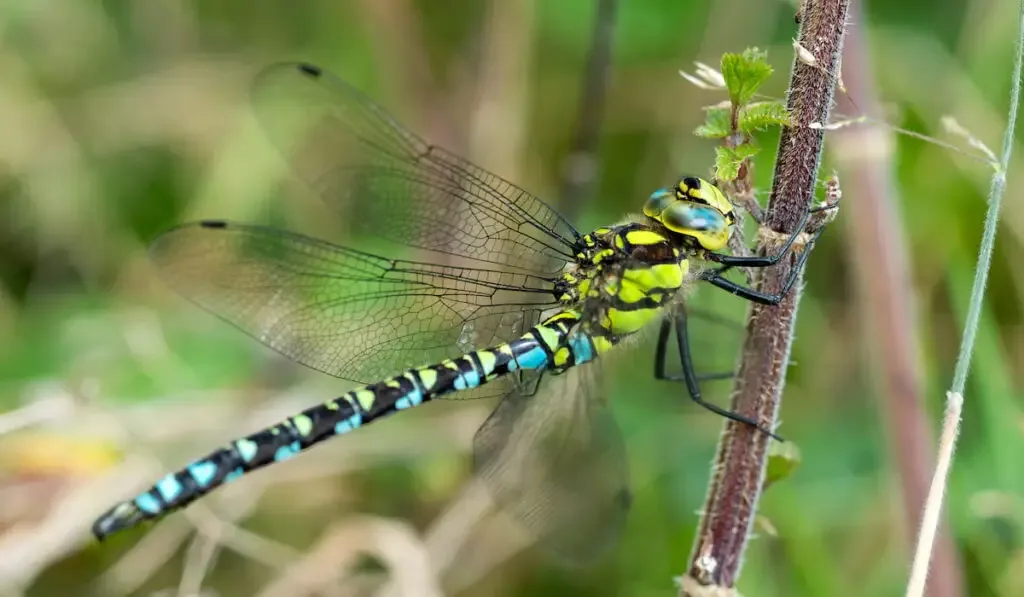
Like darners, Hawker Dragonflies belong to the family of Aeshnidae. This type of dragonfly is also believed to be the largest in the world.
There are interesting facts about hawkers. One is that they mate mid-flight before laying their eggs somewhere close by, ideally in the water. There are also proofs that show female hawkers fake their death to avoid male hawkers that they don’t consider worthy for mating.
Where to find them: North America
10. Keeled Skimmer
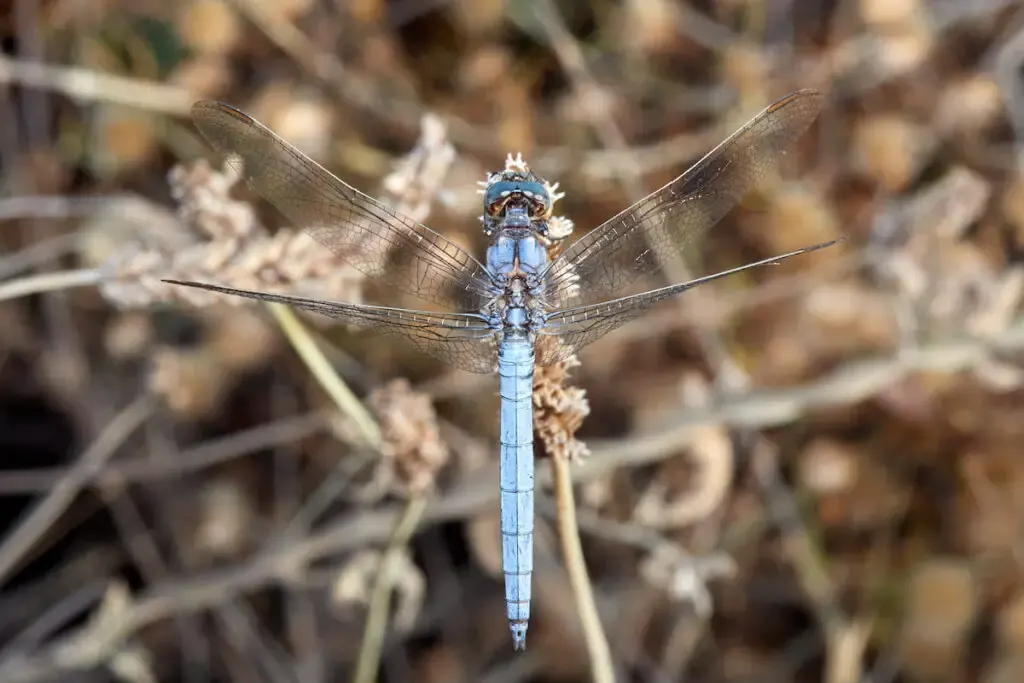
Keeled skimmers belong to the Libellulidae family. This type of dragonfly is often seen in water bodies of acidic and wet health lands, sometimes alongside golden-ringed dragonflies.
On average, these dragonflies measure around 1.6 to 1.7 inches (4.06 to 4.32 cm).
Where to find them: Central and Southern Europe, Western Britain, and Ireland. They are also found in Afghanistan, Tunisia, Denmark, Bosnia, Bulgaria, Georgia, Albania, Croatia, Algeria, Armenia, Syrian Arab Republic, Turkey, Iran, Italy, Austria, Poland, Ireland, Luxembourg, Azerbaijan, Sweden, Cyprus, Greece, Hungary, Iraq, Macedonia, Czech Republic, Portugal, Romania, Finland, Spain, France, Ukraine, Lebanon, Switzerland, Slovakia, Netherlands, Morocco, Russia, Lithuania, Norway, Serbia, Slovenia, United Kingdom, and Liechtenstein.
11. Neopetalia punctata Dragonfly
The Neopetalia punctata dragonfly is the only member of the Neopetaliidae family. It is also the only species to have one genus, namely the Neopetalia.
Where to find them: Argentina and Chile
12. Petaltail Dragonfly
Petaltail dragonflies belong to the family of Petaluridae that is believed to be the oldest dragonfly family. Fossils of this dragonfly date back 150 million years.
This type of dragonfly has long and straight tails like petals, hence their name. One thing that differentiates petaltail dragonflies from other dragonfly types is that they are found in fens instead of nearby water bodies. In addition, this type of dragonfly also takes longer to mature than other dragonfly species.
Where to find them: Australia, the United States, and other parts of the world
13. River Cruiser Dragonfly
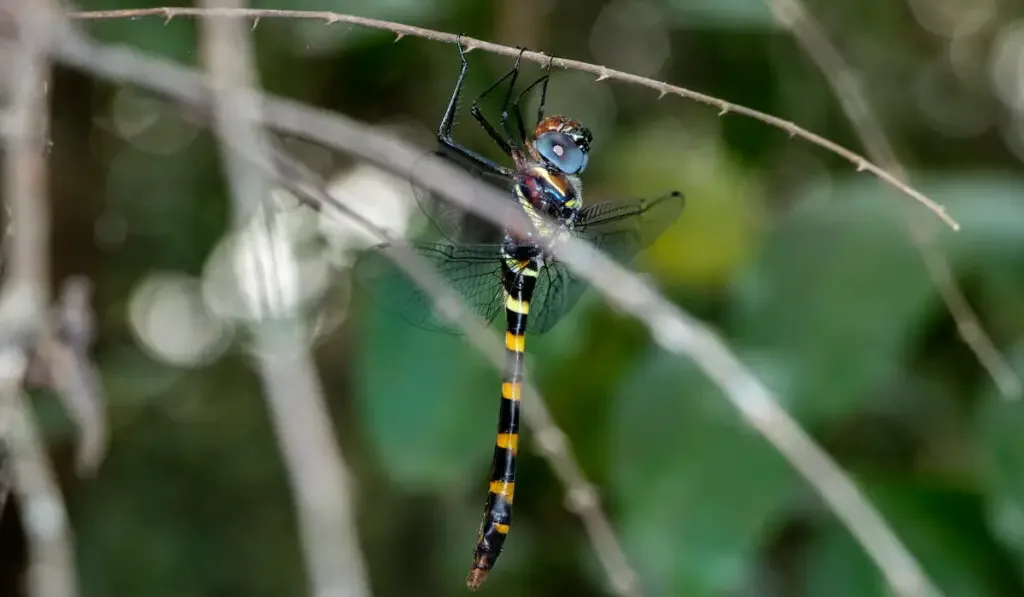
River cruiser dragonfly belongs to the family of Macromiidae. This type of dragonfly often cruises long distances around river banks and roads, hence their name.
These are large-sized dragonflies with long, slim, yellow-striped bodies. Another distinguishing characteristic of this species is its bright green eyes.
Where to find them: North America
14. Saddlebag Dragonfly
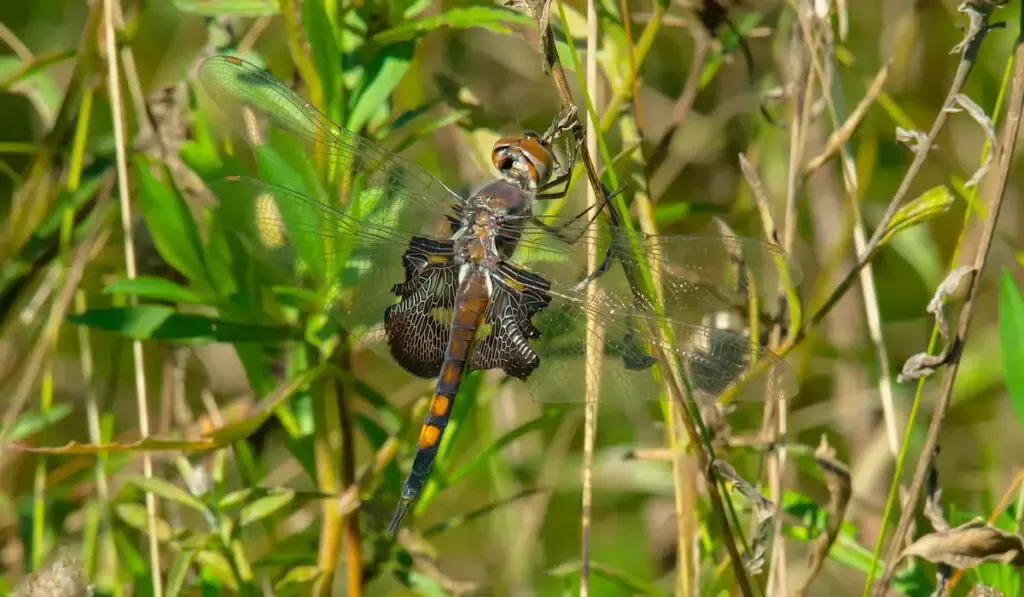
Also called black saddlebags, the saddlebag dragonfly belongs to the family of Libellulidae. This type of dragonfly prefers to live around slow-moving water bodies without fish, but with plenty of vegetation.
Saddlebag dragonflies are known to migrate from one place to another, usually from the north in the spring towards the Atlantic coast in the fall. They are also beneficial in controlling an increasing mosquito population.
Where to find them: Canada, United States, south of Mexico
15. Skimmer Dragonfly
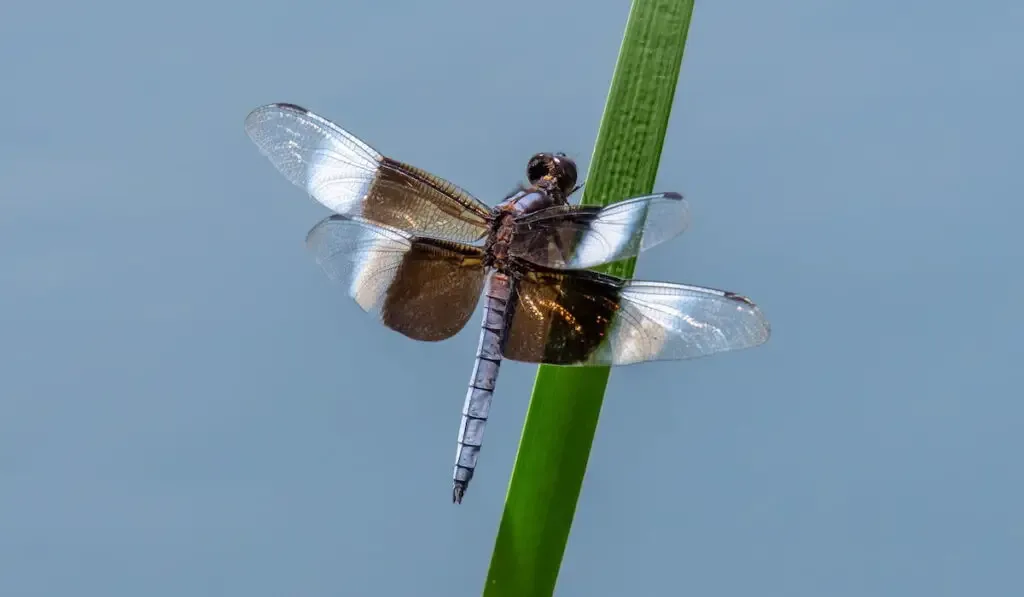
Skimmer dragonflies occupy a huge portion of the Libellulidae family. There are about 105 species and 26 different genera under this dragonfly family.
Also called ‘perchers,’ this type of dragonfly is called such due to the fact that they like to perch on crops and greenery under the sunlight.
Where to find them: North America
16. Spiketail Dragonfly

Spiketail dragonflies belong to the family of Cordulegastridae. One of the least populous among all dragonfly families, spiketails only have about eight or nine species in the single genus.
These large dragonflies have long bodies, a brown or black abdomen, and bright yellow stripes along the tail and thorax.
Where to find them: the United States, wooded, forest, and stream areas near the Rocky Mountains
17. Tigertail Dragonfly
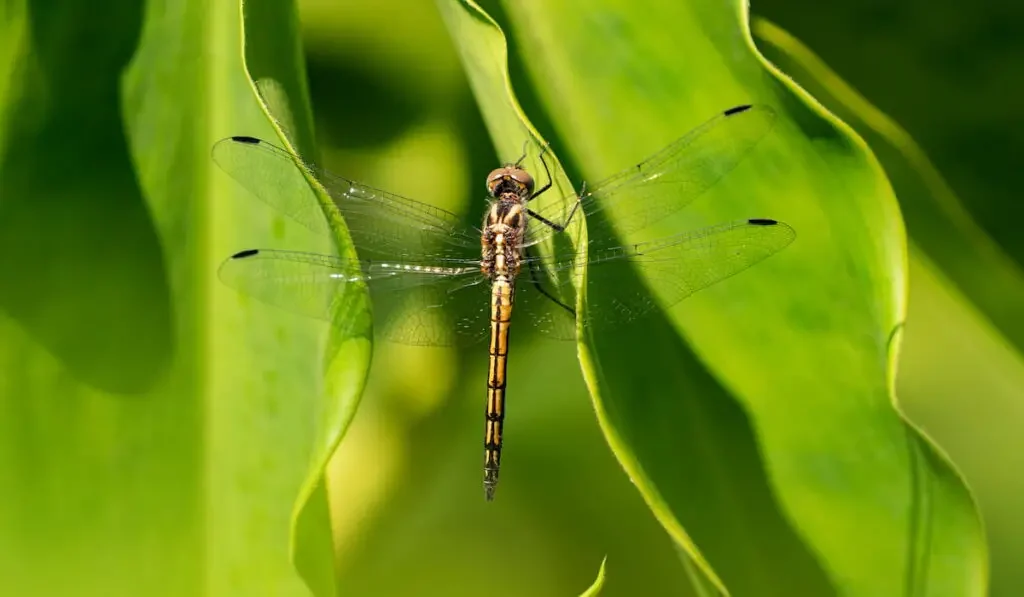
Tigertail dragonflies belong to the family of Sythemistidae. This family has approximately 43 species, of which tigertails are dominant. Tigertails are small dragonflies with a slim abdomen, similar to those dragonflies under the Corduliidae and Gomphidae families.
This type of dragonfly likes to live near slow-moving water bodies, such as small streams, ponds, and lakes. They have yellow and black stripes on their tail from which their name was based.
Where to find them: Australia, New Guinea
In Conclusion
The unique characteristics of each type of dragonfly make them one of the most fascinating flying creatures to observe. Each has its own story and physical characteristics, and unlike other annoying pests, these insects do not bother humans. When you see them, be sure to admire these graceful, elegant insects.
Source/s:
- https://worstroom.com/types-of-dragonflies/
- https://greennature.com/types-of-dragonflies/
- https://www.homestratosphere.com/types-of-dragonflies/
- https://en.wikipedia.org/wiki/Austropetaliidae
- https://nhpbs.org/wild/calopterygidae.asp
- https://en.wikipedia.org/wiki/Blue_dasher
- https://candidegardening.com/GB/insects
- https://en.wikipedia.org/wiki/Neopetalia_punctata
- https://www.wildlifetrusts.org/wildlife-explorer/invertebrates/dragonflies/golden-ringed-dragonfly
- https://en.wikipedia.org/wiki/Common_whitetail
- https://en.wikipedia.org/wiki/Keeled_skimmer
